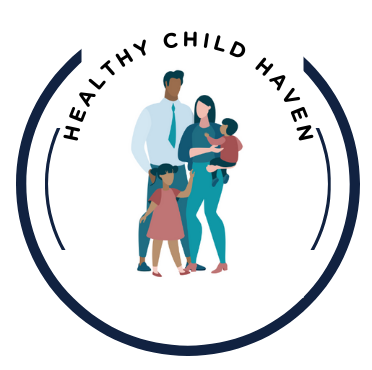
Gluten and casein are proteins found in many common foods. Gluten is in grains like wheat, barley, and rye, while casein is present in dairy products. For some folks with autism, cutting these proteins can reportedly lead to improvements in symptoms.
The gluten-free and casein-free (GFCF) diet removes all foods that contain gluten and casein. This means waving goodbye to things like bread, pastries, pasta, and milk products. The diet usually involves substituting these with gluten-free grains and dairy alternatives.
Many parents turn to the GFCF diet hoping to help manage autism symptoms. It stems from the belief that these proteins might affect the gut-brain connection, possibly exacerbating some of the challenges faced by those with autism.
In theory, the GFCF diet aims to ease symptoms by reducing inflammation, improving gut health, and potentially enhancing communication and social behaviors. Although scientific consensus is not definitive, some parents and practitioners have noticed positive changes.
Potential Benefits of GFCF Diets in Autism Management
There’s been some chatter in the scientific community about the benefits of the GFCF diet for those on the autism spectrum. Although not universally agreed upon, some studies suggest possible improvements in behavior and communication skills. This could be a big deal for families seeking new ways to support their loved ones.
Some parents report that their children show fewer digestive issues, enhanced focus, and better overall mood on the GFCF diet. They find it notable that these changes often correlate with diet adjustments, providing a bit of hope and direction.
Beyond research, personal stories from families shed light on these potential benefits. Hearing first-hand experiences can spark curiosity and offer insights about what might work for someone else experiencing similar challenges.
The diet’s possible impact on gut health gets a lot of attention too. The gut-brain link isn’t just a buzzword; it’s an area actively being researched, suggesting our digestive health can influence behaviors and moods. Some think that cutting out gluten and casein might soothe the gut, potentially helping with behavioral challenges in autism.
Challenges and Considerations When Implementing GFCF Diets
While the GFCF diet sounds promising, it’s not all sunshine and rainbows. One of the first hurdles families face is keeping the diet balanced. Eliminating entire food groups can sometimes result in nutritional gaps, so it’s crucial to ensure kids get essential nutrients from other sources.
Although the gluten free bread did cost us more, anywhere from $5 to $6, we would buy in bulk and would save money that way. If you have the time, there are recipes that I used to bake my own loaves. It wouldn’t take too much time, maybe 2 hours a weekend to makes a few loaves. I know this is not for everyone.
Social situations might add to the challenges. From birthday parties to school events, being on a restrictive diet can sometimes mean feeling left out. Encouraging open communication with friends and schools can help ease these awkward moments. Now the stores have major brand gluten free cake mixes. I would often use rice milk in place of cow’s milk. My son’s friends were all aware of his diet and still ate the cake heartily. We tried different brands and found there was no difference in taste. We used regular icing from a jar as it is already GFCF
Finding ways to make mealtime enjoyable and varied is key. The aim is not to make mealtime a battleground, but rather an opportunity for discovery and learning about new, exciting foods. Consulting with a nutritionist can be incredibly helpful in understanding food options and keeping the diet as unrestricted as possible in terms of nutrients. I found our diets as a family improved. Our diet became heathier with less dyes and additives. I made it a point to still have non GFCF foods in the house so there was not a feeling of “missing out”. I want to stress this need as the other children in the home can feel frustrated and the message that food is an enemy need be avoided. In another article I want to address the sibling issues with this diet change. I wish I had more advice and guidance in this arena.
Expert Tips and Recommendations for Transitioning to a GFCF Diet
Getting the right advice from healthcare professionals is step one for anyone considering a GFCF diet. Nutritionists or doctors specializing in autism can tailor dietary plans to meet individual needs, ensuring that nutritional balance isn’t sacrificed. As I mentioned in previous posts, I started slowly with elimination. First it was milk products. He craved yogurt. I found a yogurt milk alternative with fruit, and yes it had sugar, but it was what I needed to do to change over. I believe he had less withdrawal which can occur with taking away different foods. We found that rice milk and later oat milk seemed to be more of his liking. We avoided soy-based products as a general rule as some experts have mentioned that soy has its drawbacks and possible negative effects on the body.
Consistency is key to successfully sticking with a GFCF diet. Keeping meals planned and pantry stocked with gluten-free and casein-free options helps in avoiding the old, forbidden favorites and minimizes slip-ups.
Creativity in the kitchen can make a world of difference. Experimenting with new recipes and ingredients can transform mealtime into a fun adventure rather than a restrictive chore. Resources like cookbooks and online recipe sites can offer endless ideas.
Keeping tabs on how the diet impacts autism symptoms is important. Regular check-ins with healthcare providers and keeping a food journal can provide insights into what works and what doesn’t, helping to adjust the approach as needed to maintain positive outcomes.

